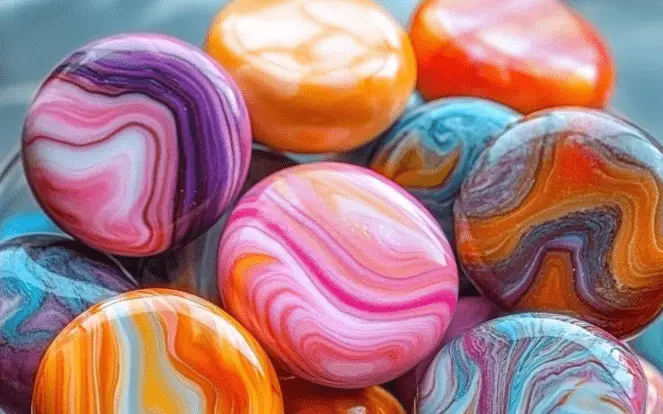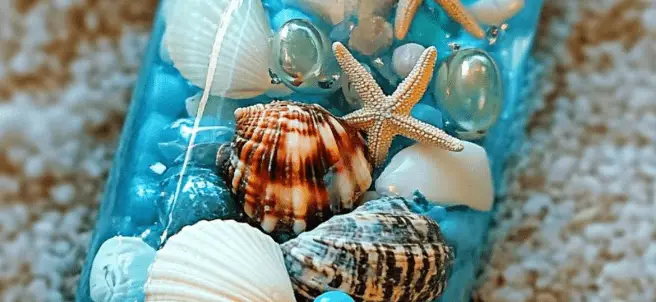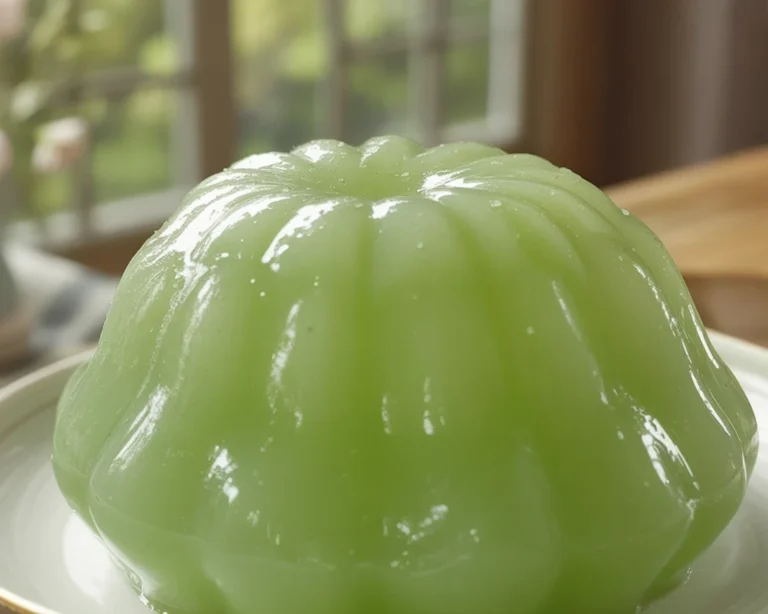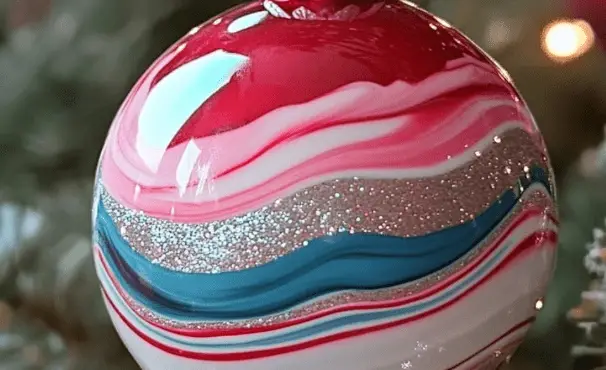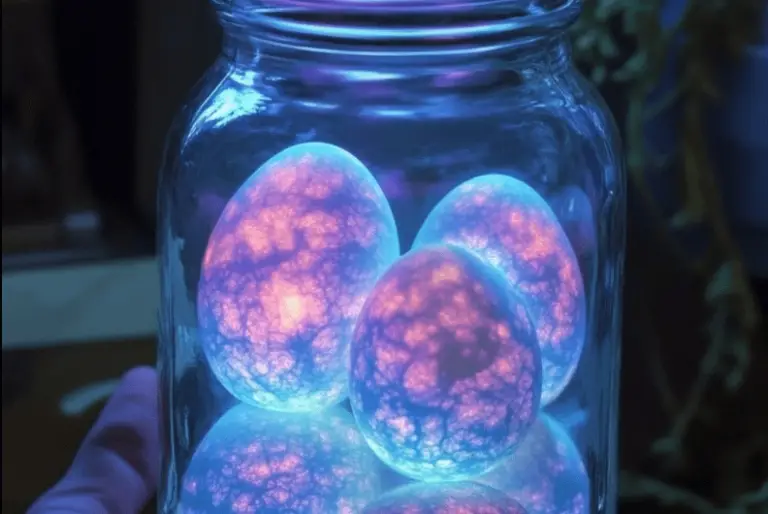Worry Stones Recipe
Crafting can be a powerful way to reduce stress, encourage creativity, and bring joy to your daily routine. If you’re looking for a simple yet fulfilling project, colorful worry stones made from clay are the perfect choice. These handmade stones aren’t just beautiful to look at—they also serve as tactile tools that can calm anxiety and help with focus. Whether you’re making them for yourself, gifting them to a friend, or using them as part of a mindful classroom activity, this craft offers a hands-on experience with both visual and emotional benefits.
Table of Contents
Ingredient
- Fimo Soft Clay or Play-Doh
- Modge Podge Acrylic Gloss Sealer
Instructions
- Start by picking out 2 or 3 colors of your clay. Mix and match to your heart’s content
- Roll those chosen colors together to form a nice, fun ball – let your creativity flow
- Shape that ball into a long snake. Remember, there are no rules; just let your imagination guide you
- Next, twist your snake into a spiral and roll it back into a ball. It’s like a fun little dance
- Now, press down on that ball to shape it into a stone. Go wild with the design; this is your moment
- For an extra touch, use your thumb to create a gentle indention in the stone. Totally optional, but oh-so-fun
- Bake your creations at 230 degrees Fahrenheit for 30 minutes in foil pans
- After baking, let your worry stones cool for a couple of hours – a little patience pays off
- Finish off with a shiny coat by applying Modge Podge Acrylic Gloss Sealer
Benefits of This Craft
This DIY project is more than just a colorful activity—it offers mental, emotional, and developmental benefits that make it a standout craft for all ages. Here are some key advantages:
- Stress relief: Worry stones can be used as fidget tools. Rubbing or holding them helps relieve anxiety and promotes calmness
- Creative expression: The mixing and shaping process gives children and adults alike a space to be creative without boundaries
- Tactile sensory experience: Working with clay provides a hands-on sensory input that can be especially beneficial for children with sensory processing needs
- Fine motor development: Rolling, twisting, and shaping clay supports hand strength and coordination
- Personalization: Each worry stone is unique. You can tailor the colors, shapes, and finishes to match your mood or gift recipient
- Therapeutic value: Making something from start to finish builds confidence and gives a sense of accomplishment
Tips
Make your worry stone project even more enjoyable and successful with these helpful suggestions:
- Use Fimo Soft Clay for long-lasting results. It hardens permanently when baked, unlike Play-Doh which may crack over time
- Always knead the clay thoroughly before shaping to soften it and make it easier to work with
- When baking, place your stones on foil pans or parchment paper to avoid sticking and ensure even heating
- Create several stones in one session to experiment with colors and textures
- Let stones cool completely before sealing. Applying gloss too early can cause smudging or clouding
- For younger children, supervise the baking and glossing steps to ensure safety
What Taste Look Like?
While these worry stones are not edible, the appeal lies in their aesthetic and tactile qualities. Once baked and sealed, they have a smooth, polished texture and a glossy finish that catches the light beautifully. Depending on how you blend the clay colors, the final look may resemble marble, candy swirls, or gemstone patterns. The stones are compact enough to fit in the palm of your hand and have a comforting weight. The optional thumb indentation gives them a practical ergonomic shape, enhancing their use as calming tools. They can look like polished pebbles or abstract art pieces—each one unique.
How to Store
To maintain the beauty and functionality of your handmade worry stones, proper storage is key:
- Keep in a small fabric pouch: This prevents scratching and makes them easy to carry in a pocket or bag
- Store in a dry, cool place: Avoid humid environments that may affect the clay over time, especially if using Play-Doh
- Avoid direct sunlight: Prolonged exposure can fade the colors, especially if non-baked dough is used
- Handle with care: While baked Fimo clay is durable, dropping stones onto hard surfaces may cause chips or cracks
- Label or personalize: If making multiple stones for different uses (focus, stress, gratitude), keep them labeled to easily identify each one
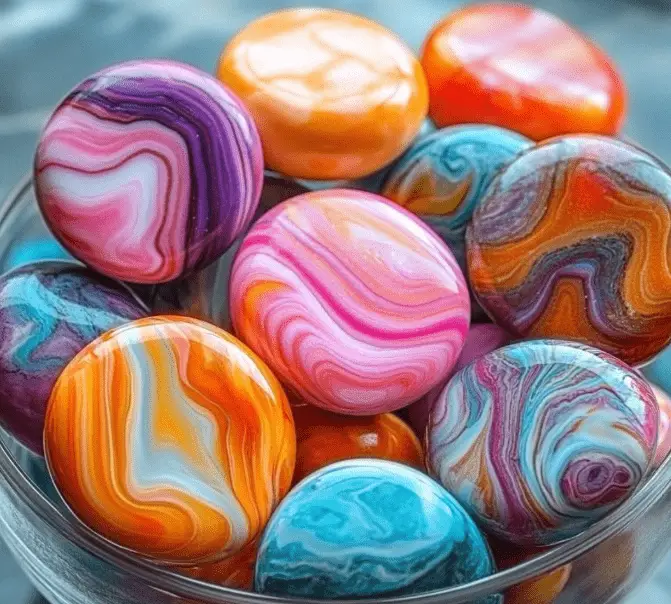
This colorful worry stone craft is an ideal way to unwind while creating something meaningful. With just a few materials, you can design a stress-relieving tool that’s both functional and beautiful. Perfect for classrooms, family activities, or solo creative time, these stones bring together art and wellness in a simple project. From swirling colors to the smooth, finished feel, every step of the process offers moments of joy and calm.
If you’re inspired by this project and want to explore more engaging ideas, check out More DIY craft ideas
FAQ
What type of clay works best for worry stones?
Fimo Soft Clay is recommended because it holds its shape well and becomes durable after baking. Play-Doh can be used for temporary stones but may not last as long.
Can I make these worry stones with kids?
Yes, this is a great activity for children. However, adults should supervise the baking and glossing steps to ensure safety.
Do I need to use Modge Podge Gloss Sealer?
It’s optional but highly recommended. It gives the stones a beautiful shine and protects them from wear and tear.
Can I add essential oils to my worry stones?
Yes, you can add a drop of essential oil to the finished stone to enhance the calming effect. Be sure to test on a small area first.
How long will the stones last?
If baked and sealed properly, Fimo-based worry stones can last for years. Play-Doh versions may dry out or crack over time.
Can I use natural clay instead of polymer clay?
Air-dry clay can work, but it won’t be as durable as polymer clay. It also may not hold vibrant colors as well.
Can I paint the stones instead of using colored clay?
Yes, acrylic paint can be applied after baking, then sealed for extra protection. This gives more control over final designs.

